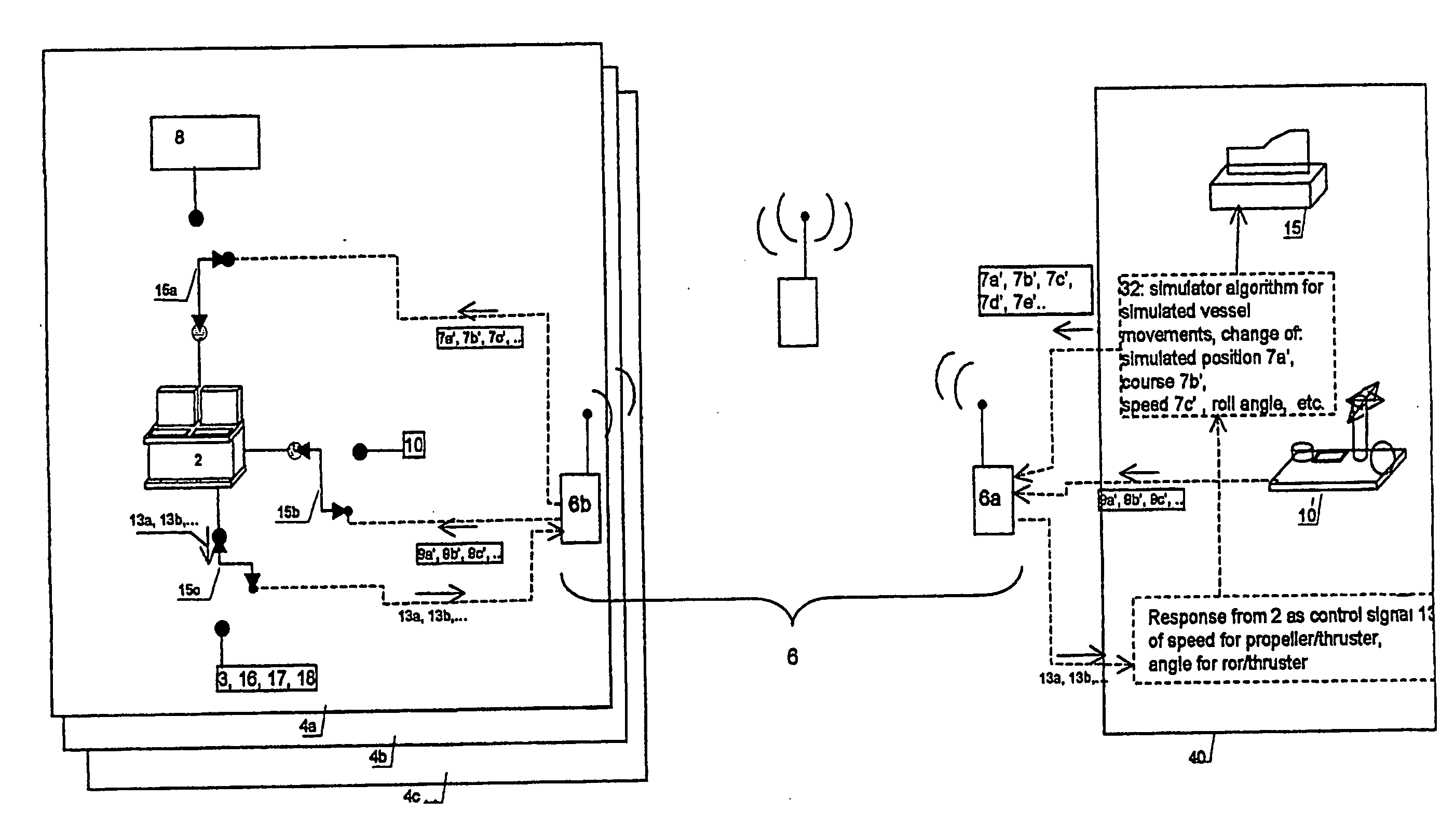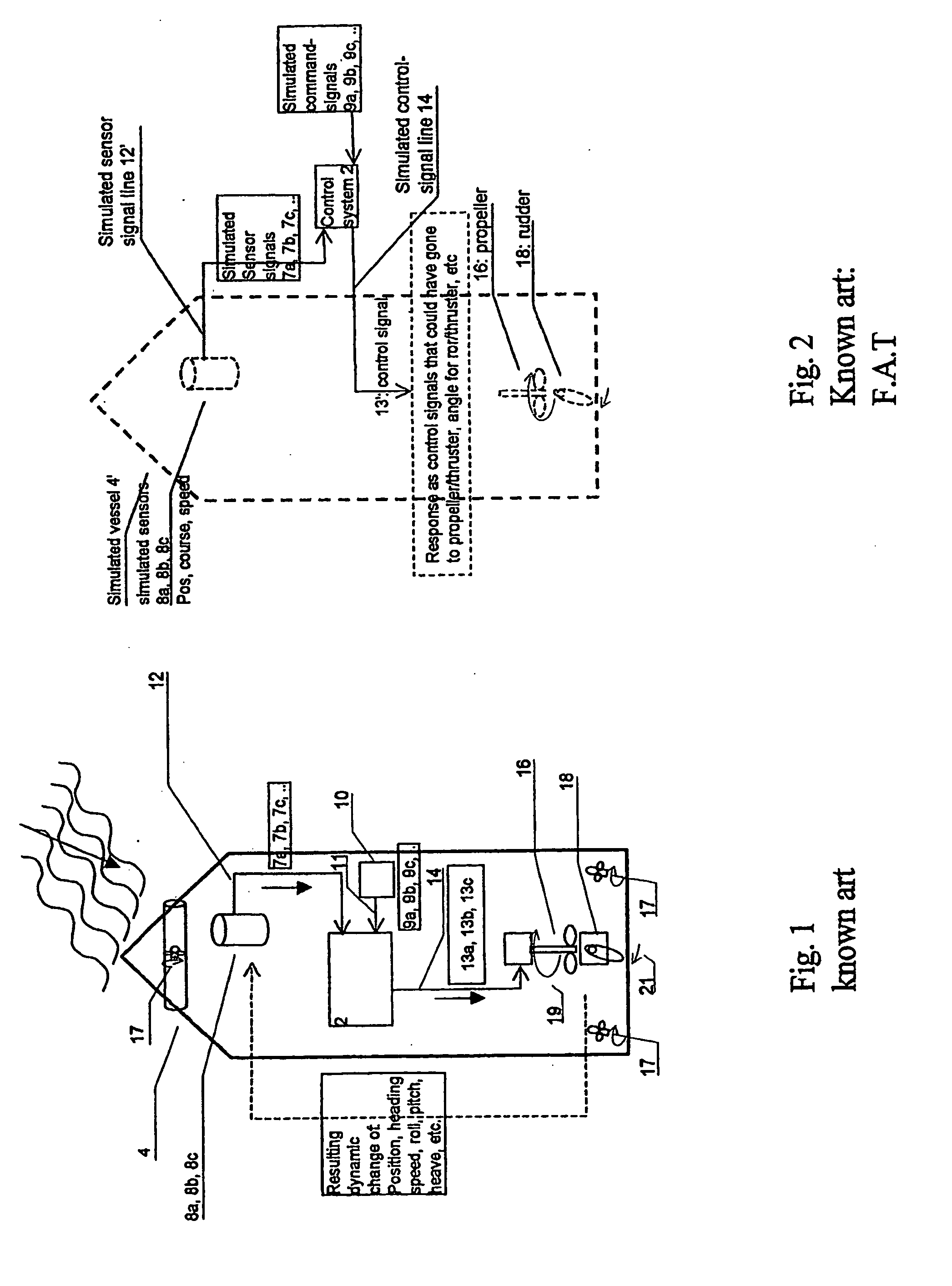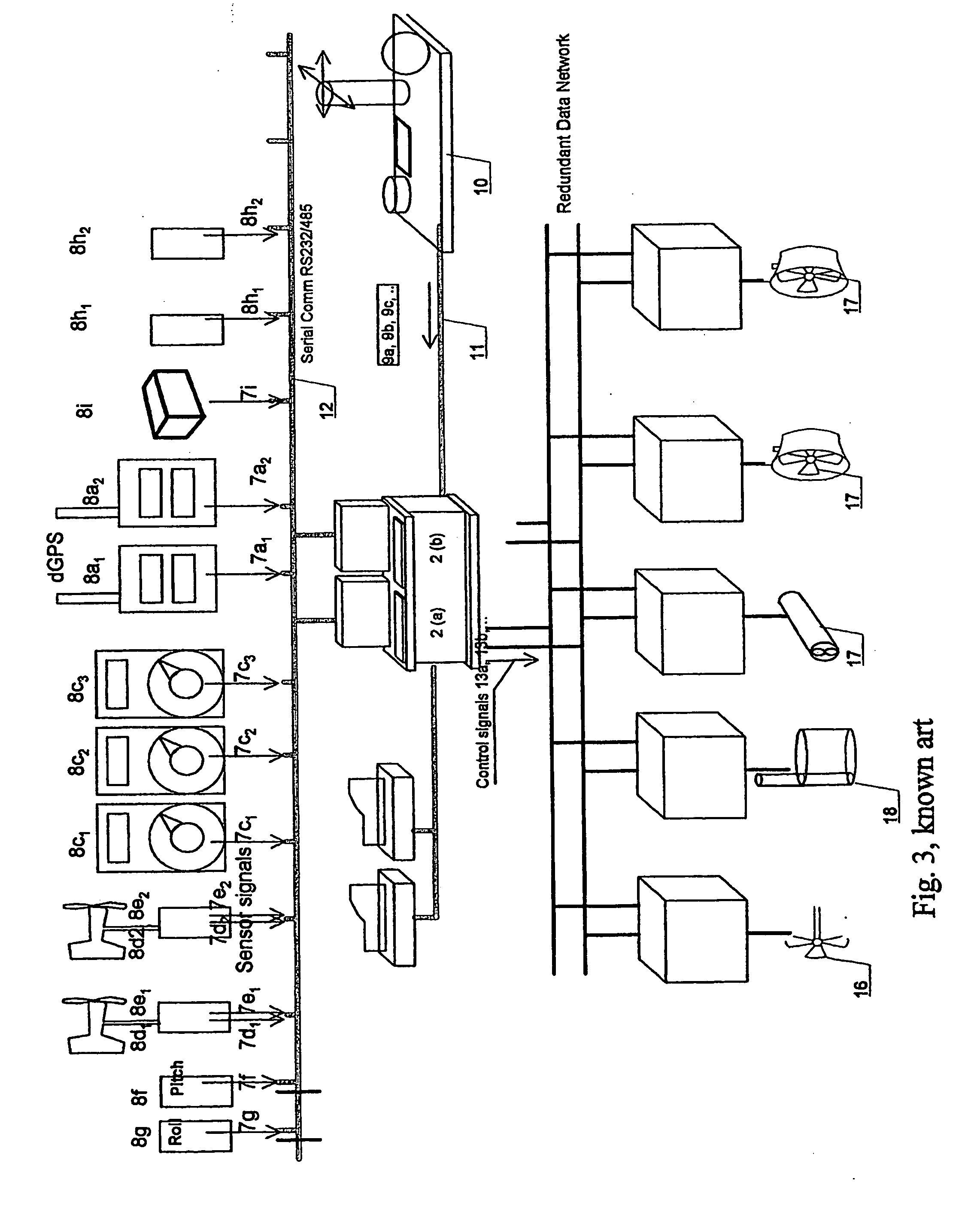System and method for testing a control system of a marine vessel
a control system and marine technology, applied in the direction of testing/monitoring control systems, vessel construction, instruments, etc., can solve the problems of difficult inspections for inspectors, hidden physical danger, and hardly considered as an option to expose the vessel
- Summary
- Abstract
- Description
- Claims
- Application Information
AI Technical Summary
Benefits of technology
Problems solved by technology
Method used
Image
Examples
Embodiment Construction
[0050] The invention includes a system for and a method for testing of a control system (2) on a vessel (4), e.g. a ship, a drilling platform, a petroleum production platform, in real time over a communication channel (6), as shown in an overview in FIG. 4a, and in more detail in FIGS. 4b and 4c. The control system (2) may include control and monitoring of the vessel (4). Testing of the control system (2) may include the simulation of normal states and extreme states and normal changes to such normal and extreme states for the vessel (4), for example ordinary movement in a simulated calm sea state H1. In addition, one may simulate ordinary movement in a simulated extreme sea state H2, failure situations with e.g. loss of motor power on a single propeller (16) where the vessel has only this single propeller (16), with subsequent dynamic simulation of rotation away from a desired course (7b) and drift away from a desired position (7a). One may also simulate the loss of one or more pro...
PUM
 Login to View More
Login to View More Abstract
Description
Claims
Application Information
 Login to View More
Login to View More - R&D
- Intellectual Property
- Life Sciences
- Materials
- Tech Scout
- Unparalleled Data Quality
- Higher Quality Content
- 60% Fewer Hallucinations
Browse by: Latest US Patents, China's latest patents, Technical Efficacy Thesaurus, Application Domain, Technology Topic, Popular Technical Reports.
© 2025 PatSnap. All rights reserved.Legal|Privacy policy|Modern Slavery Act Transparency Statement|Sitemap|About US| Contact US: help@patsnap.com



